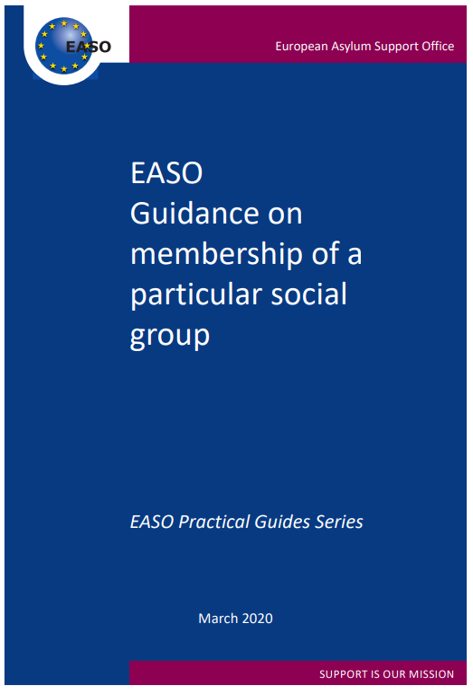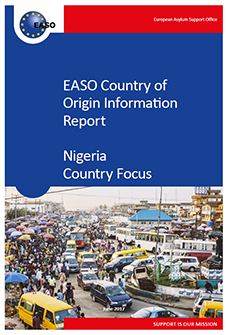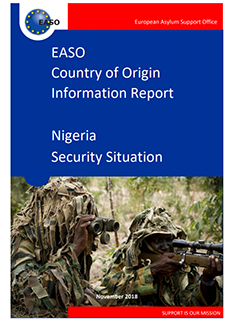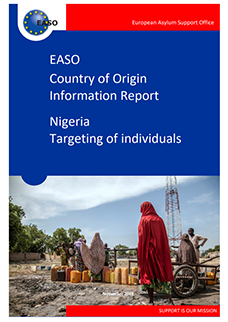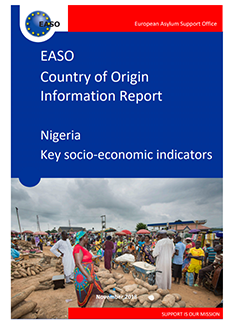The country guidance represents the common assessment of the situation in the country of origin by senior policy officials from EU Member States, in accordance with current EU legislation and jurisprudence of the Court of Justice of the European Union (CJEU).
This guidance does not release Member States from the obligation to individually, objectively and impartially examine each application for international protection. Each decision should be taken on the basis of the individual circumstances of the applicant and the situation in Nigeria at the moment of the decision, according to precise and up-to-date country information, obtained from various relevant sources (Article 10 of the Asylum Procedures Directive).
The analysis and guidance provided within this document are not exhaustive.
Below, you can learn more about the country guidance methodology and how this document was developed:
 Why is this country guidance developed?
Why is this country guidance developed?
The country guidance is intended as a tool for policy-makers and decision-makers in the context of the Common European Asylum System (CEAS). It aims to assist in the examination of applications for international protection by applicants from Nigeria, and to foster convergence in decision practices across Member States.
On 21 April 2016, the Council of the European Union agreed on the creation of a senior-level policy network, involving all Member States and coordinated by EASO, with the task to carry out a joint assessment and interpretation of the situation in main countries of origin.[1] The network supports EU-level policy development based on common country of origin information (COI), by jointly interpreting such information in light of the relevant provisions of the asylum acquis and taking into account the content of the EASO training material and practical guides where appropriate. The development of common analysis and guidance notes was also included as a key area in the envisaged new mandate of the European Union Agency for Asylum.[2]
What is the scope of this update?
|
|
The current version of the guidance updates and replaces the ‘Country Guidance: Nigeria’ (February 2019). This update mainly focuses on the chapter of subsidiary protection, and in particular Article 15(c) QD, as well as on the profile of victims of human trafficking, including forced prostitution. Additionally, minor changes have been implemented in most sections of the document. These changes reflect available up-to-date country of origin information and/or recent horizontal guidance and align the ‘Country Guidance: Nigeria’ with other available country guidance documents. |
[back]
Is this guidance binding?
The country guidance is not binding. However, the guidance note, accompanied by the common analysis, should be taken into account by Member States when examining applications for international protection, without prejudice to their competence for deciding on individual applications.
[back]
Who was involved in the development of this country guidance?
This document is the result of the joint assessment by the Country Guidance Network, whose work was supported by a Drafting Team of selected national experts and by EASO. The European Commission and UNHCR provided valuable input in this process.
The guidance note, accompanied by the common analysis, were finalised by the Country Guidance Network in September 2021 and endorsed by the EASO Management Board in October 2021.
[back]
What is the applicable legal framework?
In terms of applicable legal framework, the common analysis and guidance note are based on the provisions of the 1951 Geneva Convention [3] and of the Qualification Directive (QD) 2F2F2F2F[4]; as well as on jurisprudence of the Court of Justice of the European Union (CJEU); where appropriate, the jurisprudence of the European Court of Human Rights (ECtHR) is also taken into account.
[back]
What guidance on qualification for international protection is taken into account?
The horizontal guidance framework applied in this analysis is based primarily on the following general guidance:
| EASO Practical Guide: Qualification for international protection |
EASO Guidance on membership of a particular social group |
EASO Practical guide on the application of the internal protection alternative | EASO Practical Guide: Exclusion |
 |
These and other relevant EASO practical tools can be found at /practical-tools. |
Relevant UNHCR guidelines are also taken into account.[5]
[back]
What country of origin information has been used?
The EASO Country Guidance documents should not be considered and should not be used or referenced as sources of COI. The information contained herein is based on EASO COI reports and, in some instances, on other sources as indicated. Unlike the Country Guidance, these represent COI sources and can be referenced accordingly.
This update is based on the following recent COI:
| COI Report: Nigeria- Security situation (June 2021) | COI Report: Nigeria – Trafficking in human beings (May 2021) |
Other reports used as a basis for the analysis in this document include:
Annex II. Country of origin information references provides further details and links to all COI reports used as a basis for the analysis within this document. References within this document are to the respective sections of these COI reports.
 |
To access EASO COI reports, visit /information-analysis/country-origin-information/country-reports. |
[back]
How does country guidance assist in the individual assessment of applications for international protection?
The guidance note and common analysis follow the steps of the examination of an individual application for international protection. This document looks into the relevant elements according to the QD and provides a general assessment of the situation in the country of origin, along with guidance on relevant individual circumstances which should be taken into account.
[back]
How is this document structured?
The country guidance is structured into guidance note and common analysis:
|
The GUIDANCE NOTE is the first part you will find in this document. It summarises the conclusions of the common analysis in a light user-friendly format, providing practical guidance for the analysis of the individual case.
The COMMON ANALYSIS is the second, more detailed, part. It defines the relevant elements in accordance with legislation, jurisprudence and horizontal guidance, summarises the relevant factual basis according to the available COI, and analyses the situation in the respective country of origin accordingly.
|
 |
For additional information and to access other available country guidance, see /country-guidance |
[back]


